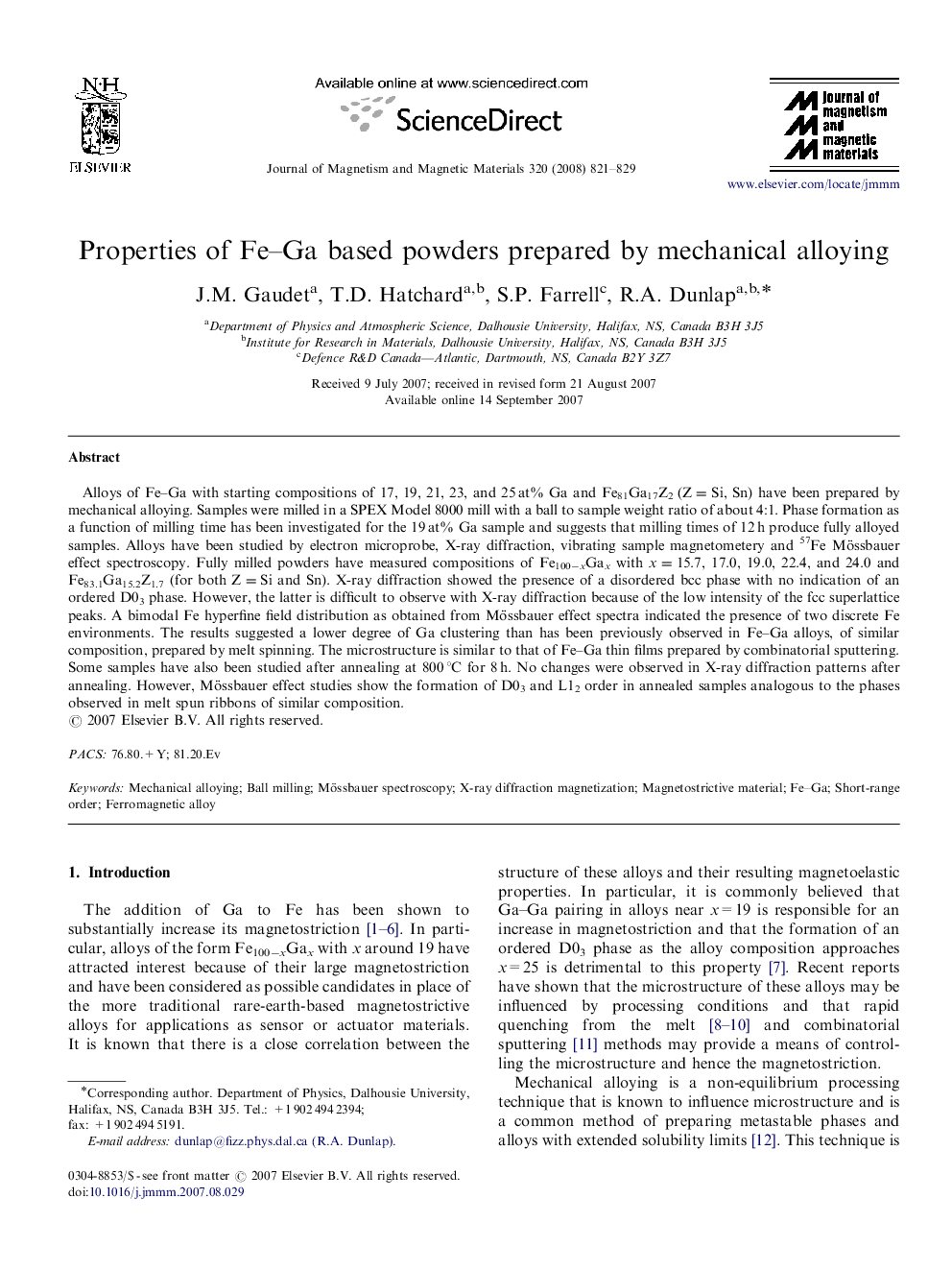| Article ID | Journal | Published Year | Pages | File Type |
|---|---|---|---|---|
| 1801571 | Journal of Magnetism and Magnetic Materials | 2008 | 9 Pages |
Alloys of Fe–Ga with starting compositions of 17, 19, 21, 23, and 25 at% Ga and Fe81Ga17Z2 (Z=Si, Sn) have been prepared by mechanical alloying. Samples were milled in a SPEX Model 8000 mill with a ball to sample weight ratio of about 4:1. Phase formation as a function of milling time has been investigated for the 19 at% Ga sample and suggests that milling times of 12 h produce fully alloyed samples. Alloys have been studied by electron microprobe, X-ray diffraction, vibrating sample magnetometery and 57Fe Mössbauer effect spectroscopy. Fully milled powders have measured compositions of Fe100−xGax with x=15.7, 17.0, 19.0, 22.4, and 24.0 and Fe83.1Ga15.2Z1.7 (for both Z=Si and Sn). X-ray diffraction showed the presence of a disordered bcc phase with no indication of an ordered D03 phase. However, the latter is difficult to observe with X-ray diffraction because of the low intensity of the fcc superlattice peaks. A bimodal Fe hyperfine field distribution as obtained from Mössbauer effect spectra indicated the presence of two discrete Fe environments. The results suggested a lower degree of Ga clustering than has been previously observed in Fe–Ga alloys, of similar composition, prepared by melt spinning. The microstructure is similar to that of Fe–Ga thin films prepared by combinatorial sputtering. Some samples have also been studied after annealing at 800 °C for 8 h. No changes were observed in X-ray diffraction patterns after annealing. However, Mössbauer effect studies show the formation of D03 and L12 order in annealed samples analogous to the phases observed in melt spun ribbons of similar composition.
